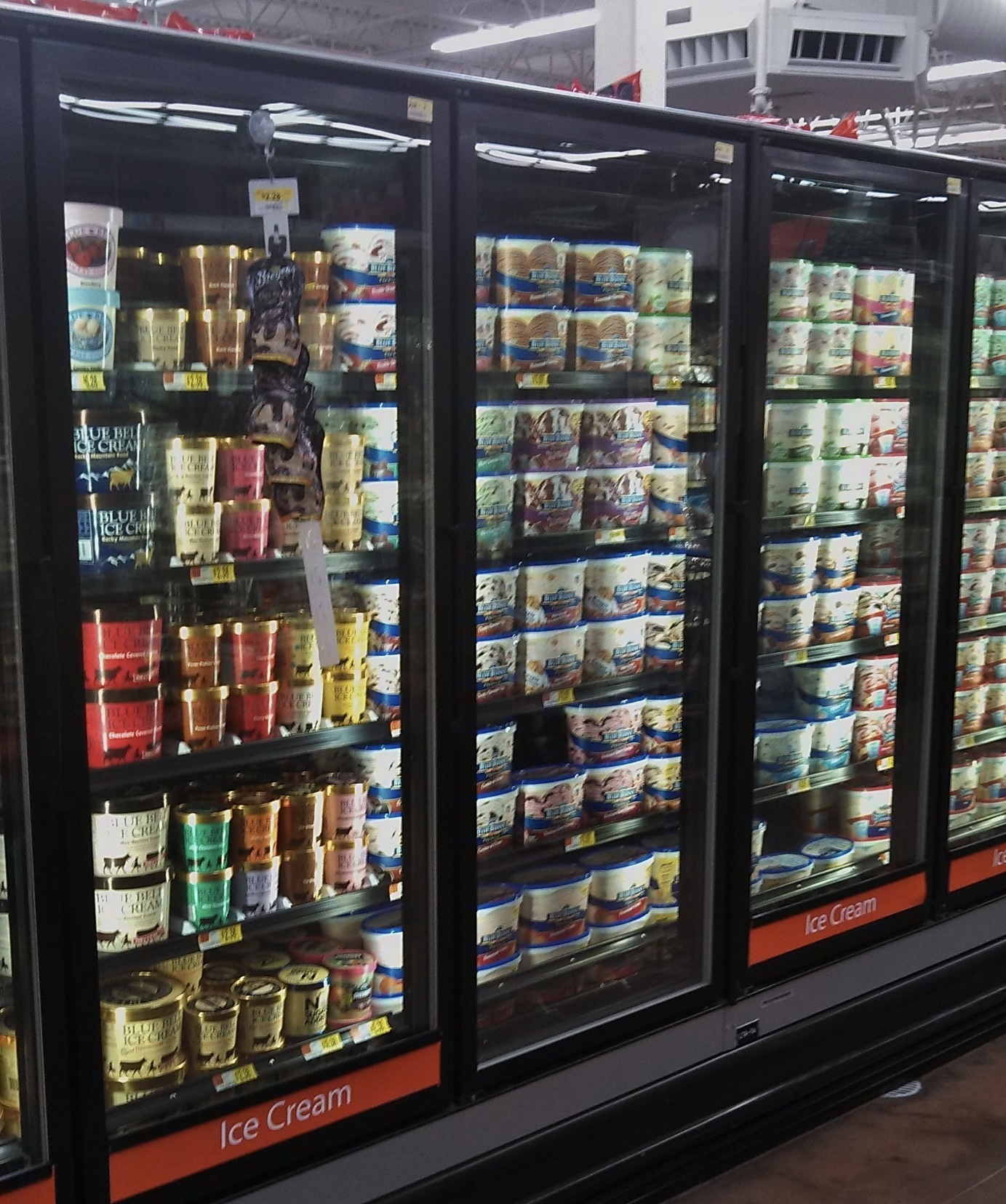“What’s in YOUR wallet? Money for air, or money for real honest-to-goodness food?”
If you like ice cream (and who doesn’t?), then it’s high time someone gave you the scoop on what you need to know before buying any. I first shared this information with our Cook’n readers 12 years ago, and I can confidently say, nothing’s changed (except it costs more and the containers are smaller---grrrr).

It was August and there were a lot of us in the grocery store staring at the overwhelming assortment of ice cream brands and flavors. Most of us were trying to figure out which was the very best buy for our money.
Talk about confusing. I finally chose a brand and moved on. But ever since, I've wondered, how do you judge the quality of ice cream without opening the container? Reading the label doesn’t help; the list of ingredients is just mind-boggling and needs a PhD to decipher. After lots of digging, I found my answer on www.answers.com Get this:
If you want to find a quality ice cream, then you need to know about “overrun.” This is the measurement of the volume of air that is whipped into a given volume of ice-cream mix (cream, sugar, flavoring agents, etc.). If the air is equal to one-half the mix, the overrun is 50 percent. If it is equal to the volume of the mix, the overrun is 100 percent. If it is one and a half times the volume of the mix, the overrun is 150 percent.

Quality ice creams have lower overruns (roughly 80 percent) than those of low-quality ice creams (100 percent or more) and therefore justifiably cost more than the substandard products, which—quite literally—are a lot of cold air. So, the old saying is true—we do get what we pay for!
There is another way to judge overrun before taking the first bite, but this necessitates purchasing the ice cream and taking it home. Place a small sample of each in two bowls; let these sit at room temperature. In no time at all, you’ll see for yourself which is the better ice cream. High overrun ice cream melts quicker than a low overrun ice cream. A good ice cream takes its time to melt and will not as readily run down the side of a cone on a hot summer day.

To add insult to injury, many producers use stabilizers like gelatin to help retard the melting speed of high-overrun ice creams. If the stabilizers are used with abandon, the ice cream may melt even more slowly than quality ice cream, though that sight will not hoodwink aficionados. They will spot telltale signs, such as the tiny air bubbles that emerge on the surface as the ice cream melts and the chalkiness or gumminess of its texture. YUK.
To test this information out, try this ice cream experiment. In your supermarket, take two quart-sized containers of ice cream (one expensive, one inexpensive) to the customer-use scale in the produce department. The ice cream with more air and less cream content will be the "lighter" of the two. Once more: We get what we pay for.

We obviously want an ice cream with more cream, not less. And I want one with the fewest mystery ingredients possible. What's wrong with wanting to eat just FOOD—real honest-to-goodness food? Now that I know what I know, this label-reading isn’t as overwhelming.
12 years ago, Edy's Grand Vanilla showed up with a 97 percent overrun. And anything from Ben & Jerry's had the lowest overrun (24%) and the fewest additives.

Now that you know, I ask, “What’s in YOUR wallet? Money for air, or money for real honest-to-goodness food?” I’m choosing food (Ben & Jerry’s here I come), but I’m just buying less of it.
 Alice Osborne
Alice Osborne
Weekly Newsletter Contributor since 2006
Email the author! alice@dvo.com
